Solutions
1) T has Sony.
2) V has Oppo.
Case
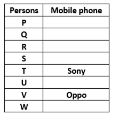
3) Among R, T and P one of them has Reliance.
(There can be two possible cases here i.e. case 1 and case 2 as either R or P can have Reliance phone.)
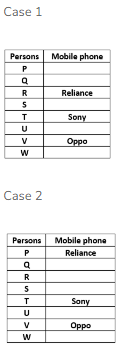
4) R does not have Vivo.
5) W does not have Vivo and Reliance.
6) P and Q do not have Vivo and Oppo.
7) U has either Max or Lava.
(From point (4), (5), (6) and (7) it can be concluded that R, W, P, Q and U do not have Vivo phone.)
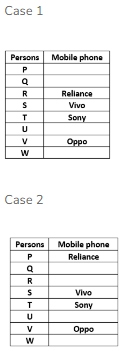
8) Either P or S has Apple.
Case 2 gets eliminated here as either P or S has Apple.

9) Either Q or U has Max.
(There can be two possible cases in case 1 i.e. case 1a and case 1b.)
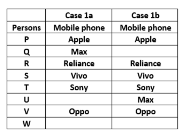
10) Neither Q nor W has lava.
Case 1b gets eliminated here as neither Q nor W has lava.
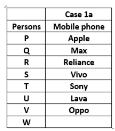
After filling the remaining information, we get
Final solution:
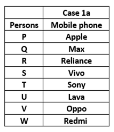
Clearly, Q has neitherLava nor Redmi is the only true statement among the given statements with respect to the given arrangement.



 Get latest Exam Updates
Get latest Exam Updates 





 ×
×






